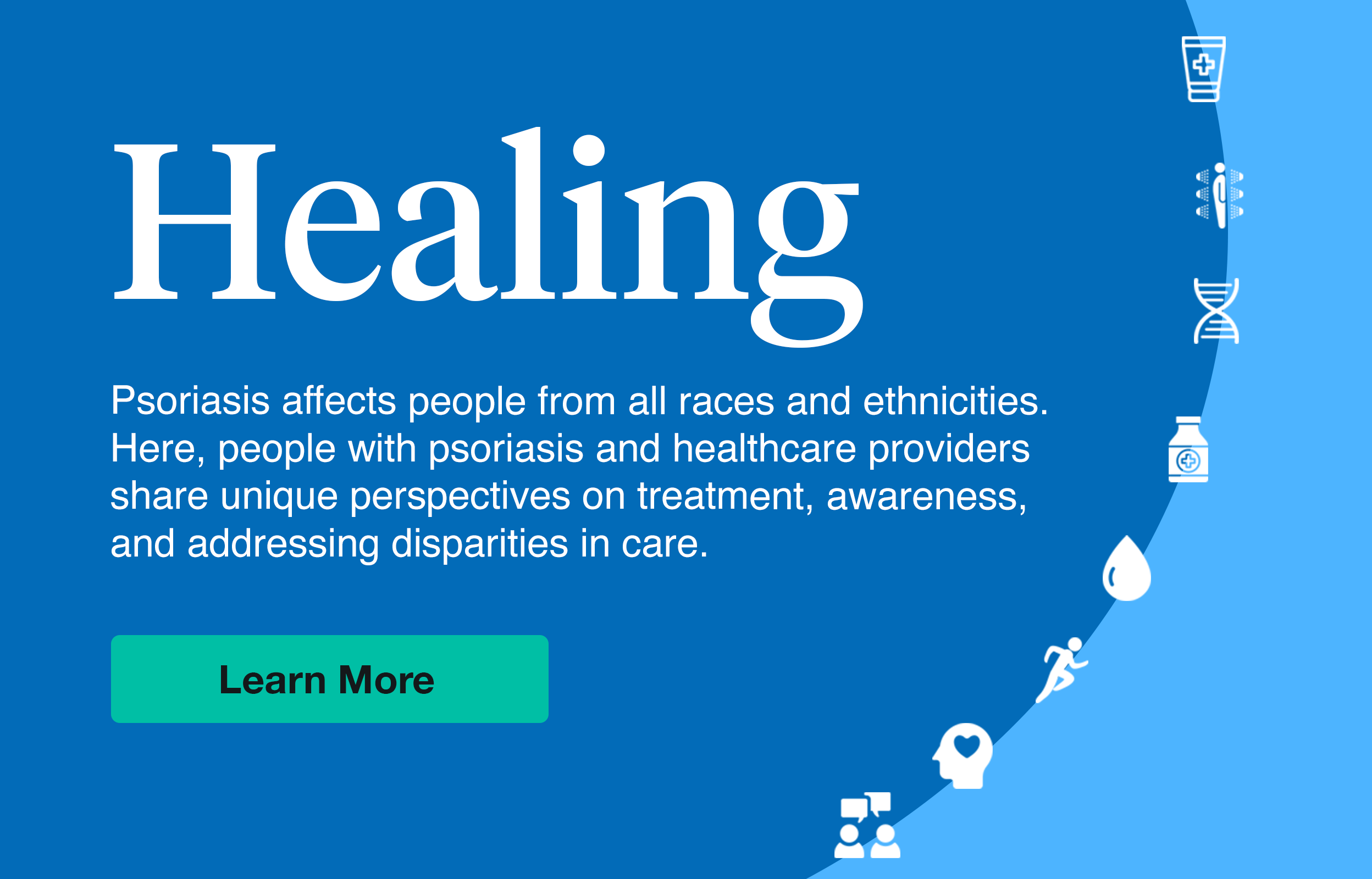Psoriasis, an autoimmune disease that usually causes red, scaly patches on the skin is most common on the elbows, knees and scalp, but can develop anywhere on the body. Experts aren’t completely sure what causes psoriasis, but both the immune system and genetics may contribute to its development. Those who have psoriasis have skin cells that grow unusually fast, which causes uncomfortable lesions and patches.
The good news? Psoriasis symptoms are completely manageable if you seek treatment as soon as you notice symptoms, and if you maintain healthy skin habits. In addition to treatments like biologics, phototherapy, oral medications and topical treatments like steroids, a healthy home skincare routine will help minimize breakouts and inflammation. Here are some of the easiest ways to take care of your skin, plus other lifestyle tips that can relieve symptoms and manage your condition.
3 ways to care for your skin throughout the day
These DIY management techniques may ease symptoms and prevent flare-ups:
Indulge in daily baths
If you’re looking for an excuse to enjoy a relaxing bath every night, you’re in luck. A daily bath will soothe inflamed skin and minimize scaling caused by psoriasis. Try soaking in a warm bath with mild bath oil, colloidal oatmeal or Epsom salt as often as you can. Avoid harsh scrubbing and products and super-hot water.
Moisturize—strategically
As soon as you get out of the bath or shower, apply an ointment-based moisturizer—doing so while your skin is still damp will help seal in the moisture, ease current flare-ups and prevent future ones. During cold months, moisturizing a few times a day may be necessary.
Head outside
Exposing your skin to small amounts of sunlight can help lesions and breakouts heal. Talk to your dermatologist about how much exposure is right for your skin—too much sun can actually trigger breakouts and increase your risk of skin cancer. Certain psoriasis medications may react negatively to sunlight, and too much sun can actually increase side effects of certain treatments, too.
Remember to always apply sunscreen to those parts of your body not being treated for psoriasis, with a SPF of 30 or higher, every two hours.
5 more lifestyle tips for keeping psoriasis symptoms at bay
A healthy lifestyle that includes a well-balanced diet and regular exercise can also improve life with psoriasis. Here’s how to get started:
Start eating like the Greeks
What you eat won’t cure psoriasis completely, but a healthy diet may help minimize inflammation and flare-ups down the road.
Having psoriasis increases your risk for certain conditions like coronary artery disease, type 2 diabetes and stroke. Research shows that following a Mediterranean diet, a diet rich in foods like olive oil, beans, nuts, legumes, seeds, seafood, fruits and vegetables, can reduce the risk of heart disease, diabetes, stroke and high cholesterol. Fish and certain oils, specifically options that contain omega-3s, can actually reduce inflammation and ease psoriasis symptoms, too.
Try limiting your sugar, dairy, alcohol and gluten intake, since these foods can contribute to inflammation.
Nix bad habits like smoking and drinking
Habits like smoking and excessive drinking may interfere with psoriasis treatment and can make symptoms worse.
If you don’t smoke, don’t start. If you do, try stopping. If you drink, do so in moderation, meaning one drink a day for women, two for men. If you’re having trouble nixing these habits on your own, turn to resources like nicotine replacement therapy, SmokeFree.gov, SMART Recovery or personal therapists. Your healthcare provider can help you choose the resource that’s right for you.
And adopt healthy ones like exercise
While exercising during a psoriasis flare-up may sound like the last thing you want to do, a workout may actually help ease your inflammation. Bonus? You’ll feel better (physically and mentally) afterwards, too.
If you’re just starting an exercise plan, water aerobics or swimming may be good choices as you determine what works for your body and your psoriasis symptoms. But be careful if you are in the middle of a flare-up and have infected or oozing sores. Chlorine may further irritate breakouts, but on the other hand, may help clear up any areas that are crusty, hard or flaky. Walking is always a full-proof way to get exercise as well. Shoot for 30 minutes of exercise, five days a week. Range-of-motion exercises are recommended for those living with psoriasis, too.
Work on managing your stress levels
High stress levels may affect both your immune system and hormones, resulting in an over-response from your immune system. This over-response causes the immune system to release too many chemicals that typically help heal an infection or wound, and may trigger psoriasis symptoms. Minimizing your stress can keep those aggravating symptoms at bay. On the flip side, dealing with psoriasis symptoms on a daily basis may also cause stress in and of itself.
A therapist can help you talk through stress management techniques, and your healthcare provider may also recommend meditation and exercise to reduce stress levels.
Seek counseling if you need it
It’s not uncommon for those with psoriasis to experience symptoms of depression, anxiety or even suicidal thoughts. The same process that encourages inflammation may actually influence your brain and mental state. The cosmetic changes psoriasis brings can be challenging to navigate, too. The right management plan and support system will greatly reduce mood fluctuations.
If you notice changes in your mood, talk to your dermatologist for support group recommendations; the National Psoriasis Foundation is a great go-to resource as well.
While psoriasis is a chronic condition that requires daily attention, if you take good care of your skin and stick to your treatment plan, flare-ups and breakouts will be reduced, and you can enjoy all of the things you’re used to doing.





